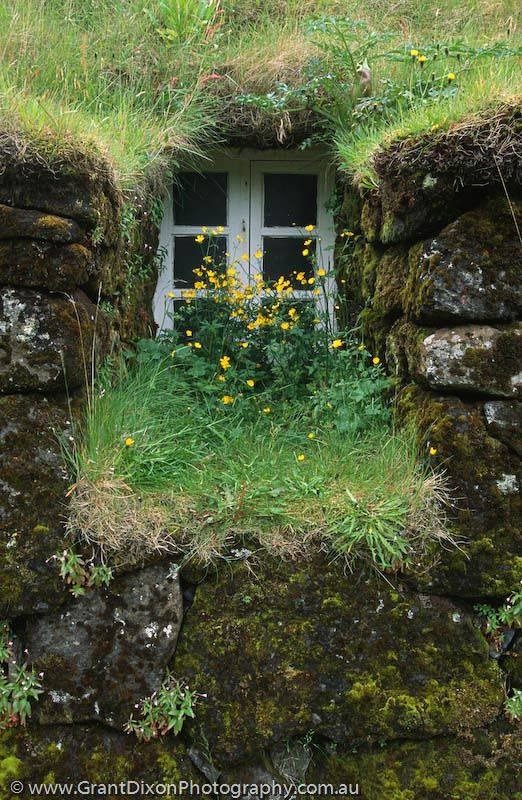Text
I love America. "Land of the free", where you can get heavily fined or evicted from your home for not mowing your lawn enough or for growing vegetables in your yard.
HOAs should be illegal and I am 100% serious about that.
269 notes
·
View notes
Text
I am once again thinking about digging holes

It's so fucked up that digging a bunch of holes works so well at reversing desertification
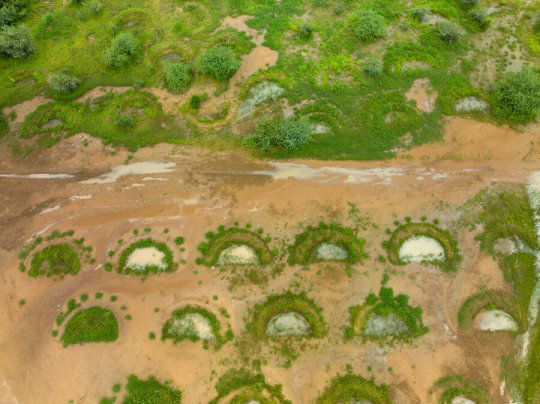
I hate that so much discourse into fighting climate change is talking about bioenginerring a special kind of seaweed that removes microplastics or whatever other venture-capital-viable startup idea when we have known for forever about shit like digging crescent shaped holes to catch rainwater and turning barren land hospitable
42K notes
·
View notes
Photo



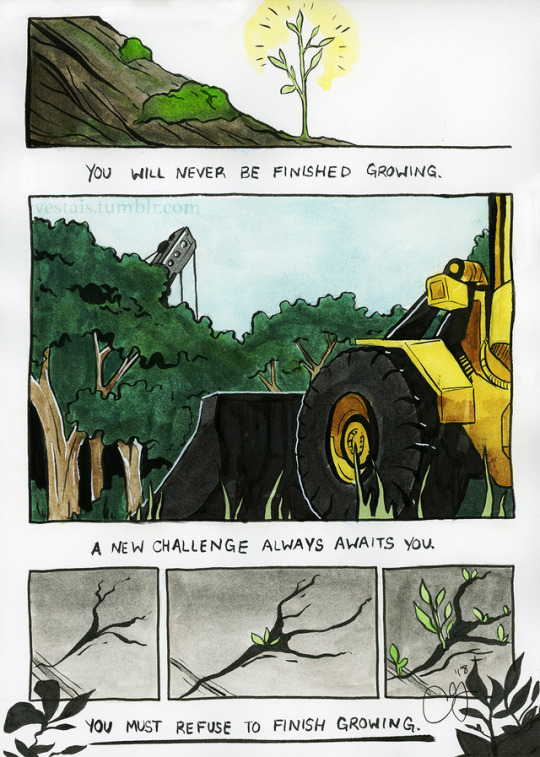
I have been working on this comic “Undergrowth” for the past month and I’m so happy to finally be able to share it with you!! This is the reason I haven’t been posting as much art on tumblr. I was very inspired by people who depict personal growth as a potted plant, and I wanted to do my own take on that idea: I think of it more as an entire forest or ecosystem within a person.
I hope reading this will inspire you to keep improving as a person even though it’s a process that is so difficult and convoluted.
[commission] [ko-fi] [Please do not repost my work!]
45K notes
·
View notes
Text
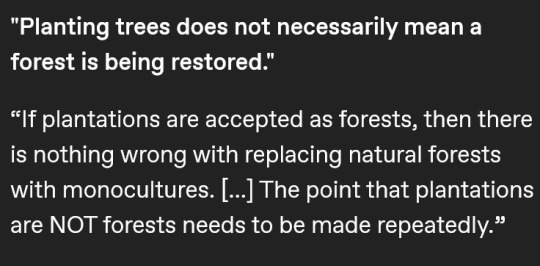
Despite its green image, Ireland has surprisingly little forest. [...] [M]ore than 80% of the island of Ireland was [once] covered in trees. [...] [O]f that 11% of the Republic of Ireland that is [now] forested, the vast majority (9% of the country) is planted with [non-native] spruces like the Sitka spruce [in commercial plantations], a fast growing conifer originally from Alaska which can be harvested after just 15 years. Just 2% of Ireland is covered with native broadleaf trees.
Text by: Martha O’Hagan Luff. “Ireland has lost almost all of its native forests - here’s how to bring them back.” The Conversation. 24 February 2023. [Emphasis added.]
---
[I]ndustrial [...] oil palm plantations [...] have proliferated in tropical regions in many parts of the world, often built at the expense of mangrove and humid forest lands, with the aim to transform them from 'worthless swamp' to agro-industrial complexes [...]. Another clear case [...] comes from the southernmost area in the Colombian Pacific [...]. Here, since the early 1980s, the forest has been destroyed and communities displaced to give way to oil palm plantations. Inexistent in the 1970s, by the mid-1990s they had expanded to over 30,000 hectares. The monotony of the plantation - row after row of palm as far as you can see, a green desert of sorts - replaced the diverse, heterogenous and entangled world of forest and communities.
Text by: Arturo Escobar. "Thinking-Feeling with the Earth: Territorial Struggles and the Ontological Dimension of the Epistemologies of the South." Revista de Antropologia Iberoamericana Volume 11 Issue 1. 2016. [Emphasis added.]
---
But efforts to increase global tree cover to limit climate change have skewed towards erecting plantations of fast-growing trees [...] [because] planting trees can demonstrate results a lot quicker than natural forest restoration. [...] [But] ill-advised tree planting can unleash invasive species [...]. [In India] [t]o maximize how much timber these forests yielded, British foresters planted pines from Europe and North America in extensive plantations in the Himalayan region [...] and introduced acacia trees from Australia [...]. One of these species, wattle (Acacia mearnsii) [...] was planted in [...] the Western Ghats. This area is what scientists all a biodiversity hotspot – a globally rare ecosystem replete with species. Wattle has since become invasive and taken over much of the region’s mountainous grasslands. Similarly, pine has spread over much of the Himalayas and displaced native oak trees while teak has replaced sal, a native hardwood, in central India. Both oak and sal are valued for [...] fertiliser, medicine and oil. Their loss [...] impoverished many [local and Indigenous people]. [...]
India’s national forest policy [...] aims for trees on 33% of the country’s area. Schemes under this policy include plantations consisting of a single species such as eucalyptus or bamboo which grow fast and can increase tree cover quickly, demonstrating success according to this dubious measure. Sometimes these trees are planted in grasslands and other ecosystems where tree cover is naturally low. [...] The success of forest restoration efforts cannot be measured by tree cover alone. The Indian government’s definition of “forest” still encompasses plantations of a single tree species, orchards and even bamboo, which actually belongs to the grass family. This means that biennial forest surveys cannot quantify how much natural forest has been restored, or convey the consequences of displacing native trees with competitive plantation species or identify if these exotic trees have invaded natural grasslands which have then been falsely recorded as restored forests. [...] Planting trees does not necessarily mean a forest is being restored. And reviving ecosystems in which trees are scarce is important too.
Text by: Dhanapal Govindarajulu. "India was a tree planting laboratory for 200 years - here are the results." The Conversation. 10 August 2023. [Emphasis added.]
---
Nations and companies are competing to appropriate the last piece of available “untapped” forest that can provide the most amount of “environmental services.” [...] When British Empire forestry was first established as a disciplinary practice in India, [...] it proscribed private interests and initiated a new system of forest management based on a logic of utilitarian [extraction] [...]. Rather than the actual survival of plants or animals, the goal of this forestry was focused on preventing the exhaustion of resource extraction. [...]
Text by: Daniel Fernandez and Alon Schwabe. "The Offsetted." e-flux Architecture (Positions). November 2013. [Emphasis added.]
---
At first glance, the statistics tell a hopeful story: Chile’s forests are expanding. […] On the ground, however, a different scene plays out: monocultures have replaced diverse natural forests [...]. At the crux of these [...] narratives is the definition of a single word: “forest.” [...] Pinochet’s wave of [...] [laws] included Forest Ordinance 701, passed in 1974, which subsidized the expansion of tree plantations [...] and gave the National Forestry Corporation control of Mapuche lands. This law set in motion an enormous expansion in fiber-farms, which are vast expanses of monoculture plantations Pinus radiata and Eucalyptus species grown for paper manufacturing and timber. [T]hese new plantations replaced native forests […]. According to a recent study in Landscape and Urban Planning, timber plantations expanded by a factor of ten from 1975 to 2007, and now occupy 43 percent of the South-central Chilean landscape. [...] While the confusion surrounding the definition of “forest” may appear to be an issue of semantics, Dr. Francis Putz [...] warns otherwise in a recent review published in Biotropica. […] Monoculture plantations are optimized for a single product, whereas native forests offer [...] water regulation, hosting biodiversity, and building soil fertility. [...][A]ccording to Putz, the distinction between plantations and native forests needs to be made clear. “[...] [A]nd the point that plantations are NOT forests needs to be made repeatedly [...]."
Text by: Julian Moll-Rocek. “When forests aren’t really forests: the high cost of Chile’s tree plantations.” Mongabay. 18 August 2014. [Emphasis added.]
2K notes
·
View notes
Text

Image: Replica Viking homes and other items at L'Anse aux Meadows, a UNESCO world heritage site in Newfoundland, Canada
4 notes
·
View notes
Text
In many places in Europe, as well as outside of it, e.g. in Asia, there are legends told about figures, usually of female gender, who, according to folk belief, watch over spinning, punish lazy spinsters, make sure that no spinning is done on days when spinning is forbidden and so forth. Many legends tell of the visits of these beings, and how they punish spinsters who violate spinning taboos or fail to finish their spinning on time etc. They are also frequently described as being equipped with flax and spinning tools while in the act of spinning.
Thus, in Slovenia, Austria and Germany we find Perchta/Pehtra/ Perhta/Pehtra baba/Pehtrna/Pirta/Pehta/Percht/Berchta/Zlata baba, in Germany Frau Holle or Holda, Stampe/Stempe/Stempa, and in Switzerland Frau Saelde in the role of the “Spinnstubenfrau”. The most prominent Slovenian researcher in these traditions, Niko Kuret, points out the similarities with beings which in Slovenia we also know by other names, such as Kvatrnica, Torka or Torklja. The Italians know a similar being named Befana, the French have Tante Airie, and we also find them with several different names in Central Asia, from Iran through Tajikistan to the basin of the lower Syr Darya and Amu Darya rivers etc. (Kuret 1997; 1989, II: 458). There are also various other beings with whom we could equate them to a certain extent, for instance the French Heckelgauclere, the Swiss Sträggele and Chrungele, the German Herke, the Slovenian/ Czech/Slovakian Lucy and others.
Mythical beigns punishing the breaking of taboos on spinning by Mirjam Mencej
179 notes
·
View notes
Text
Suitor’s gift saga continues with:
Distaffs!




These were all used for holding material when spinning. Known as “rockhuvud/linfäste” extra fancy distaffs would be gifted to a young man’s intended, to sit at the top of her spinning wheel. The extra texture of the whittled distaff would make tying the material onto it easier, but usually it was still necessary to use a piece of string.
And then we have a special kind from Gästrikland:

Why a young man would gift that to a young woman, only he could tell you.
300 notes
·
View notes
Text
worship evolves with time. yes, the people who worshipped the gods back in the day had specific offerings to be given. but what is stopping you from giving modern offerings? things around your house? offerings shouldn't have to cost you a fortune. your deities aren't holding you at gunpoint to only receive what you can't easily get. they are a means of showing your love in your day-to-day.
so yes!! give your deities candy bars! show them a silly little doodle of them in the corner of your notebook!! make a spotify playlist and play it for them!! dedicate a journal to them!! make a pinterest board and fill it with pins that remind you of them!!
the important aspect of these offerings is that you are thinking about your deities. thinking about them and feeling love and devotion to them is a means of offering! you are devoting your energy in these acts!!
1K notes
·
View notes
Photo
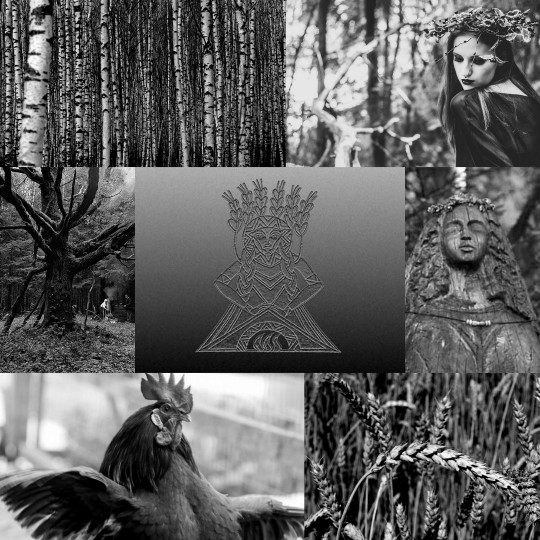
Baltic mythology: Žemyna
Žemyna (Žemelė, Žemė – earth) – goddess of earth, harvest and giver of life. People believed that she brings harvest inseminated by thunder (meaning Perkūnas, god of thunder). Žemyna has a very creative looks description. Her shirt is birch grove, hair – wheat field, eyelashes – plowed up soil, apron – flowery meadow, ribbon – rainbow and her eyes are two lakes.
As a giver of all life on Earth, she was reffered as everyone‘s mother. Lithuanians respected her so much that during their prays they kissed the ground to salute their goddess. They kissed the ground in case of some life events too, like when a bride left her home for the first time or when settting off to a long trip. Even after feeling guilty for doing something.
Balts also held specific sacrifice rites to Žemyna. They sacrificed pigs and piglets, sometimes bread with curds and salt or cheese. Roosters and hens were also among common sacrifices. Any kind of color except the red ones so goddess would not get mad and start a fire. After this they digged rooster‘s bones in the barn. During the rite it was required to pour some sacral beer on the ground for Žemyna and only then drink it themselves. For this Lithuanians used special sacred scoops made of horns or wood. The goddess got sacrifices while building a new house too. People believed that if you put a black cat, some bread, willow and juniper branches, wax or wooden cross, money, etc among the bricks it will bring good luck and Žemyna will look over you.
Lithuanians asked Žemyna‘s help when someone fell ill and used soil to heal people. For example, if someone started hiccuping, they would be given some soil and told to eat it. It was also believed that it is possible to talk to Žemyna as everyone believed that she can open the ground and let you meet with your lost loved ones. Some common curses are also related to Žemyna and earth: kad tu kiaurai žemę prasmegtum (I wish you went down the open ground) or kad tave Žemyna prarytų (I hope Žemyna swallows you down her throat).
97 notes
·
View notes
Text

Žemyna, or Mati Zemyna
Baltic and Slavic deity.
Earth goddess, Mother Earth.
photo source
~~~~~~~~~~~~~~~~~
Zeme (Lithuania); Zemes Mate (Latvia)
Mat Zemlya, or Mati Syra Zemlya (literally Damp Mother Earth).
Some connect her with the Slavic goddess Mokos(h).
4 notes
·
View notes
Text
"I have felt the comfort and reassurance of wet, wild places—the steady surge and flow of the sea on sand, water slipping over stones. There is meaning in the natural rhythms of dying and living, winter and spring, bones and leaves. Even in times of bewilderment or despair, there is the steadfast ground underfoot—pine duff, baked clay, stone turned red in the rain. I am trying to understand this, the power of water, air, earth, and time to bring gladness gradually from grief and to restore meaning to lives that seem empty or unmoored.”
~ Kathleen Dean Moore, from the book Wild Comfort
110 notes
·
View notes
Text
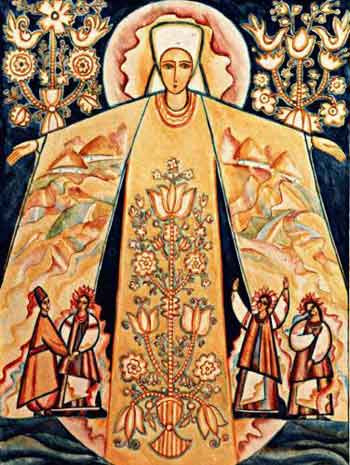
Mati Zemlya
or Mokos
[artist unknown - source needed]
3 notes
·
View notes
Text

Traditional embroidery of a Mokosh pattern, recurring independently in women's arts from Poland and the Urkaine through Russia to Siberia.
15 notes
·
View notes

